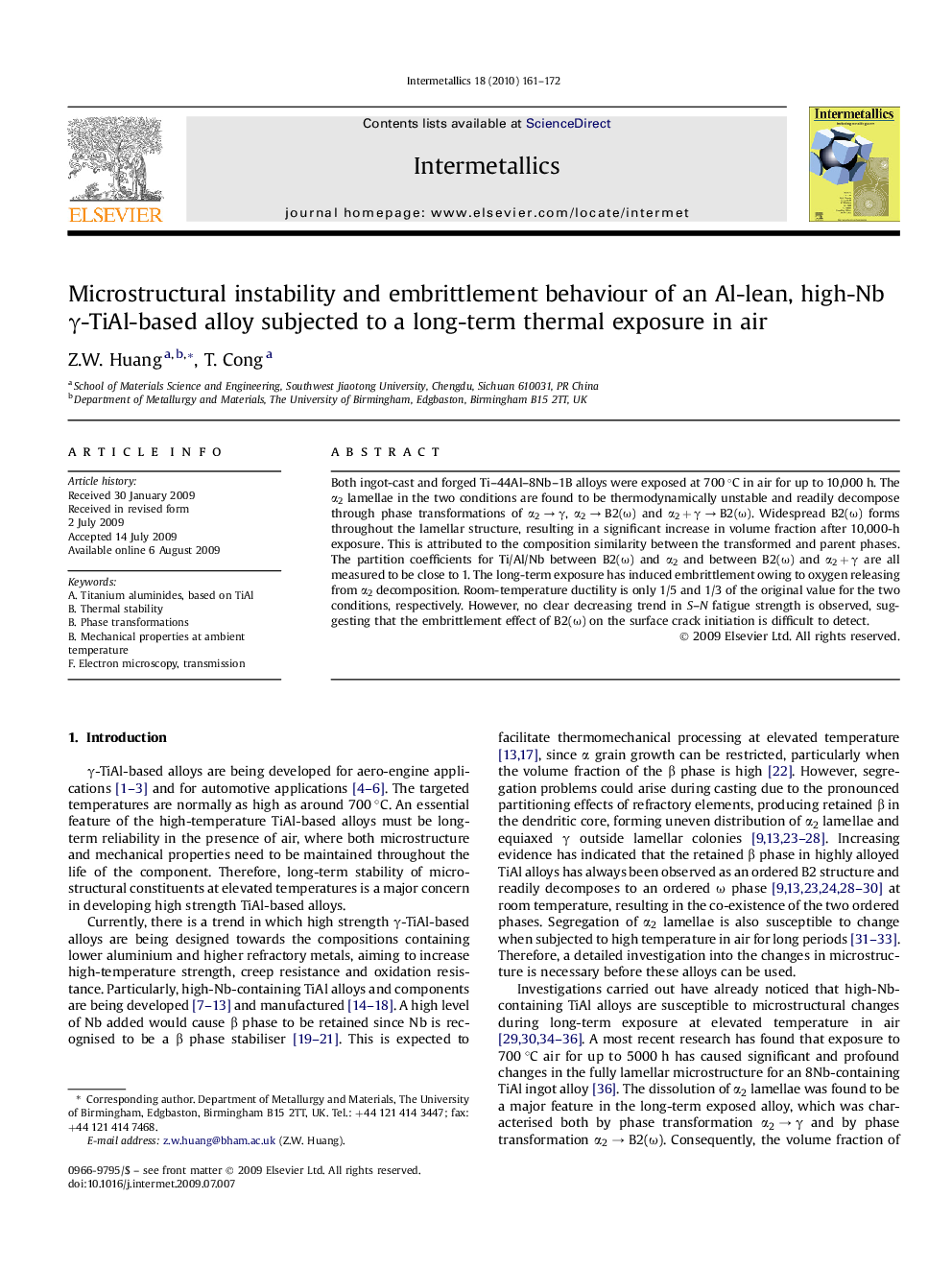| Article ID | Journal | Published Year | Pages | File Type |
|---|---|---|---|---|
| 1601059 | Intermetallics | 2010 | 12 Pages |
Both ingot-cast and forged Ti–44Al–8Nb–1B alloys were exposed at 700 °C in air for up to 10,000 h. The α2 lamellae in the two conditions are found to be thermodynamically unstable and readily decompose through phase transformations of α2 → γ, α2 → B2(ω) and α2 + γ → B2(ω). Widespread B2(ω) forms throughout the lamellar structure, resulting in a significant increase in volume fraction after 10,000-h exposure. This is attributed to the composition similarity between the transformed and parent phases. The partition coefficients for Ti/Al/Nb between B2(ω) and α2 and between B2(ω) and α2 + γ are all measured to be close to 1. The long-term exposure has induced embrittlement owing to oxygen releasing from α2 decomposition. Room-temperature ductility is only 1/5 and 1/3 of the original value for the two conditions, respectively. However, no clear decreasing trend in S–N fatigue strength is observed, suggesting that the embrittlement effect of B2(ω) on the surface crack initiation is difficult to detect.
